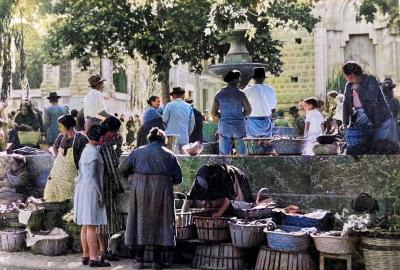How have carob seeds influenced historical trade or economy in Mediterranean cultures?
Similar Topics
carob seeds trade
mediterranean economy
historical weight standard
carat system origin
gemstone valuation weight
mediterranean agriculture
ancient trade routes
carob economic impact
Carob seeds have played a unique and influential role in the historical trade and economy of Mediterranean cultures, primarily due to their remarkable consistency in weight. In ancient times, these small, hard seeds were used as a natural standard for measuring precious metals and gemstones, particularly gold. This measure, due to its uniform weight, formed the basis for the carat system still used today in jewelry and gemstone valuation. This intrinsic property allowed merchants and traders across the Mediterranean to establish a reliable and universal standard of weight that facilitated commerce and minimized disputes over the quantity and authenticity of traded goods.
Beyond their use as weight standards, carob seeds were also valued economically in various Mediterranean societies for their agricultural and dietary potential. Carob trees thrive in the warm, dry Mediterranean climate and their pods were harvested as a nutritious food source, sometimes used as a substitute for cocoa. Although not as economically dominant as olive oil or wine, carob cultivation contributed to local economies by supporting rural agricultural communities. The ability to trade both the seeds and the pods created an additional layer of commerce, particularly in regions like Sicily, Crete, and parts of North Africa, where carob trees grew abundantly.
The influence of carob seeds on Mediterranean trade also extended to cultural practices and trade routes. Their consistent weight standard helped establish trust and fairness in markets, encouraging wider exchange between diverse cultures around the Mediterranean basin. This facilitated not only economic activity but also the exchange of ideas and goods among ancient civilizations such as the Phoenicians, Greeks, and Romans. In this sense, carob seeds served as symbolic connectors in a region where maritime trade was crucial for economic prosperity.
In summary, carob seeds significantly influenced historical trade and the economy in Mediterranean cultures by providing a reliable weight measure for precious goods and supporting agricultural economies. Their role in nurturing trust in trade transactions and contributing to diverse local economies highlights their understated but enduring impact on the vibrant commercial networks of the ancient Mediterranean world.
Beyond their use as weight standards, carob seeds were also valued economically in various Mediterranean societies for their agricultural and dietary potential. Carob trees thrive in the warm, dry Mediterranean climate and their pods were harvested as a nutritious food source, sometimes used as a substitute for cocoa. Although not as economically dominant as olive oil or wine, carob cultivation contributed to local economies by supporting rural agricultural communities. The ability to trade both the seeds and the pods created an additional layer of commerce, particularly in regions like Sicily, Crete, and parts of North Africa, where carob trees grew abundantly.
The influence of carob seeds on Mediterranean trade also extended to cultural practices and trade routes. Their consistent weight standard helped establish trust and fairness in markets, encouraging wider exchange between diverse cultures around the Mediterranean basin. This facilitated not only economic activity but also the exchange of ideas and goods among ancient civilizations such as the Phoenicians, Greeks, and Romans. In this sense, carob seeds served as symbolic connectors in a region where maritime trade was crucial for economic prosperity.
In summary, carob seeds significantly influenced historical trade and the economy in Mediterranean cultures by providing a reliable weight measure for precious goods and supporting agricultural economies. Their role in nurturing trust in trade transactions and contributing to diverse local economies highlights their understated but enduring impact on the vibrant commercial networks of the ancient Mediterranean world.
🧩 Related Questions
Related Question
What regional traditions involve pairing Mallorcan sausages with specific drinks?
Related Question
What legal protections exist for the Mallorquín language within the framework of Spanish law?
Related Question
How do Mallorcan authors use local landscapes and traditions in their literary works?


